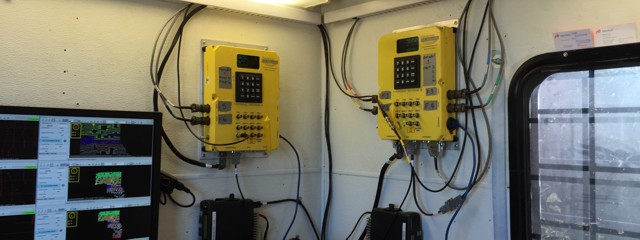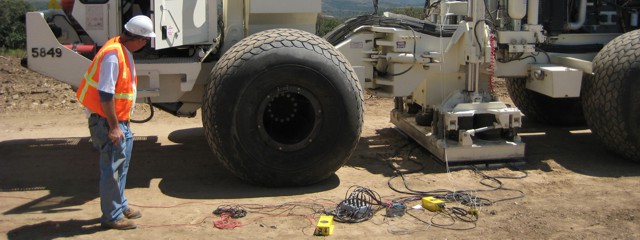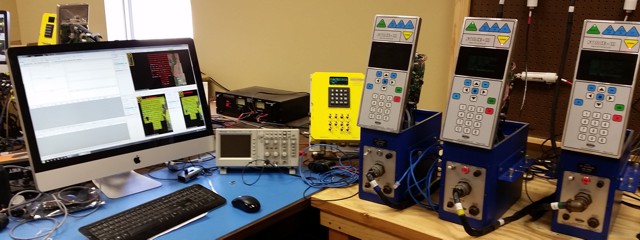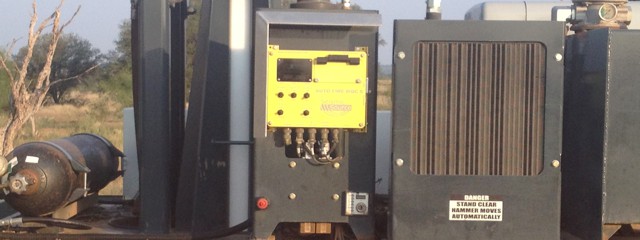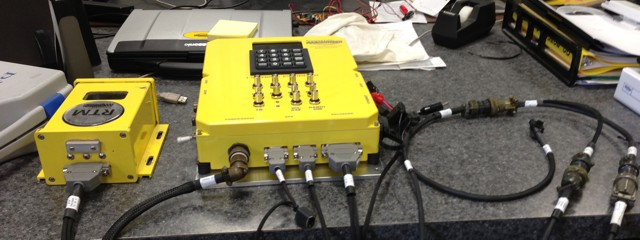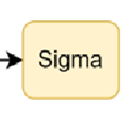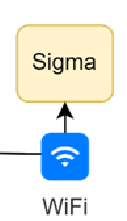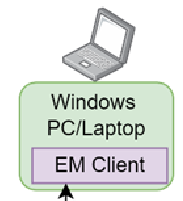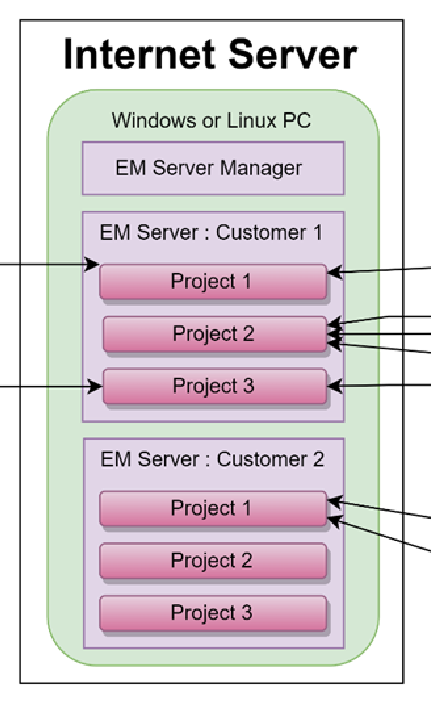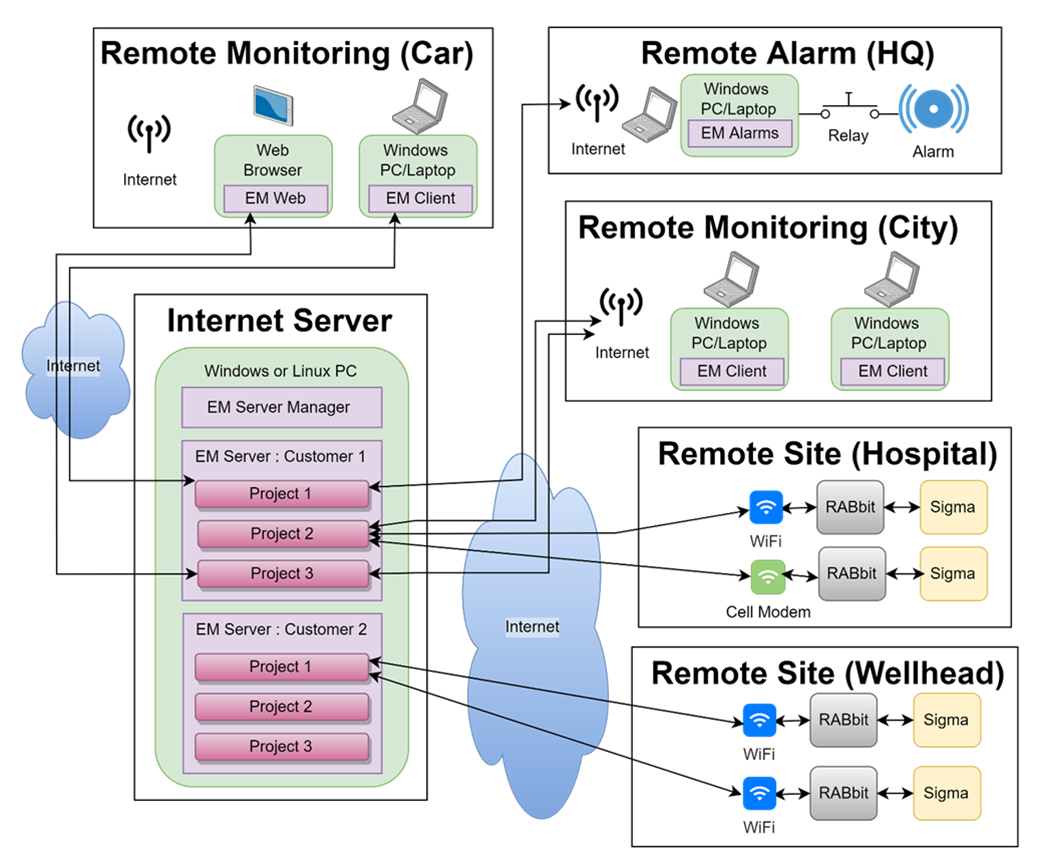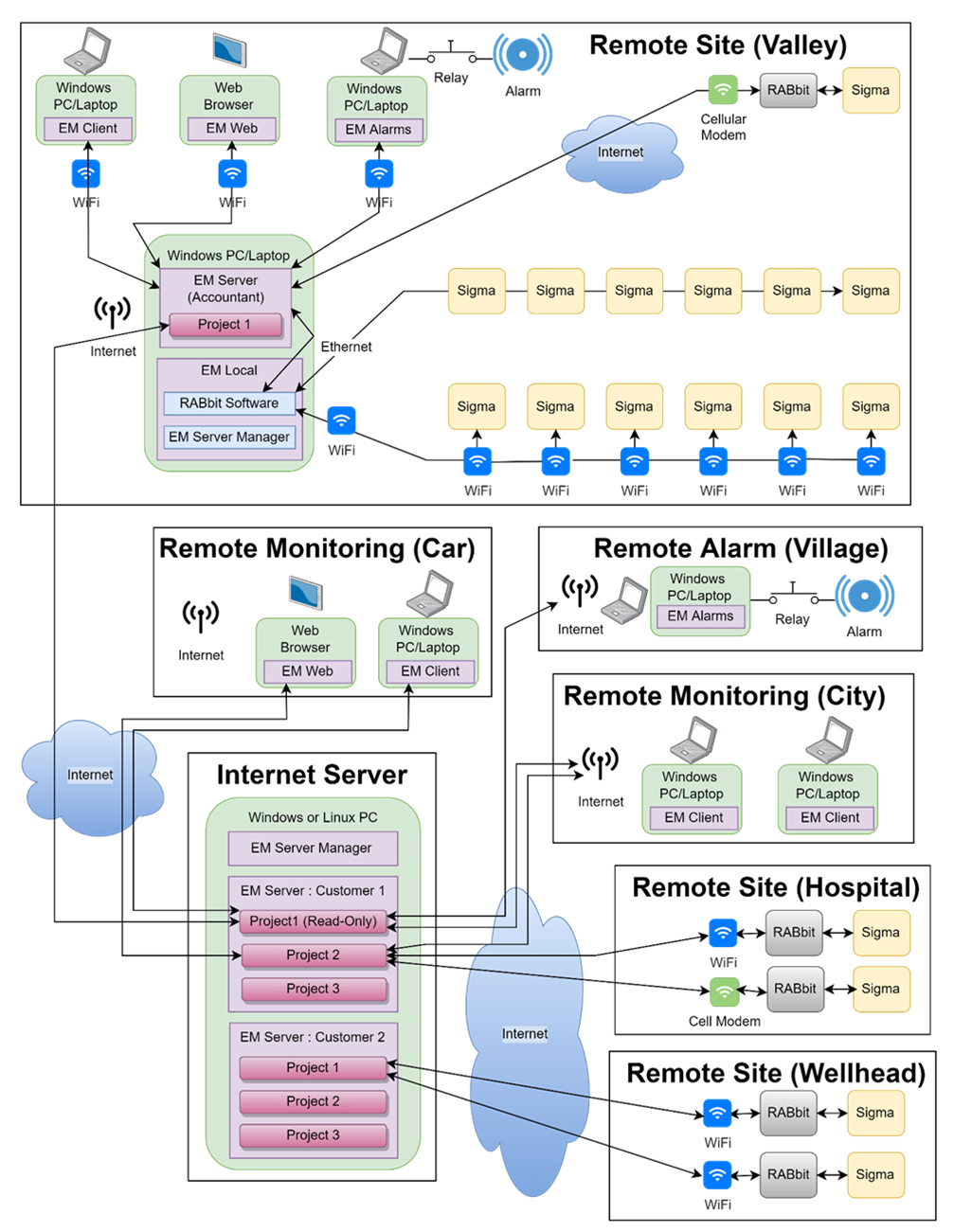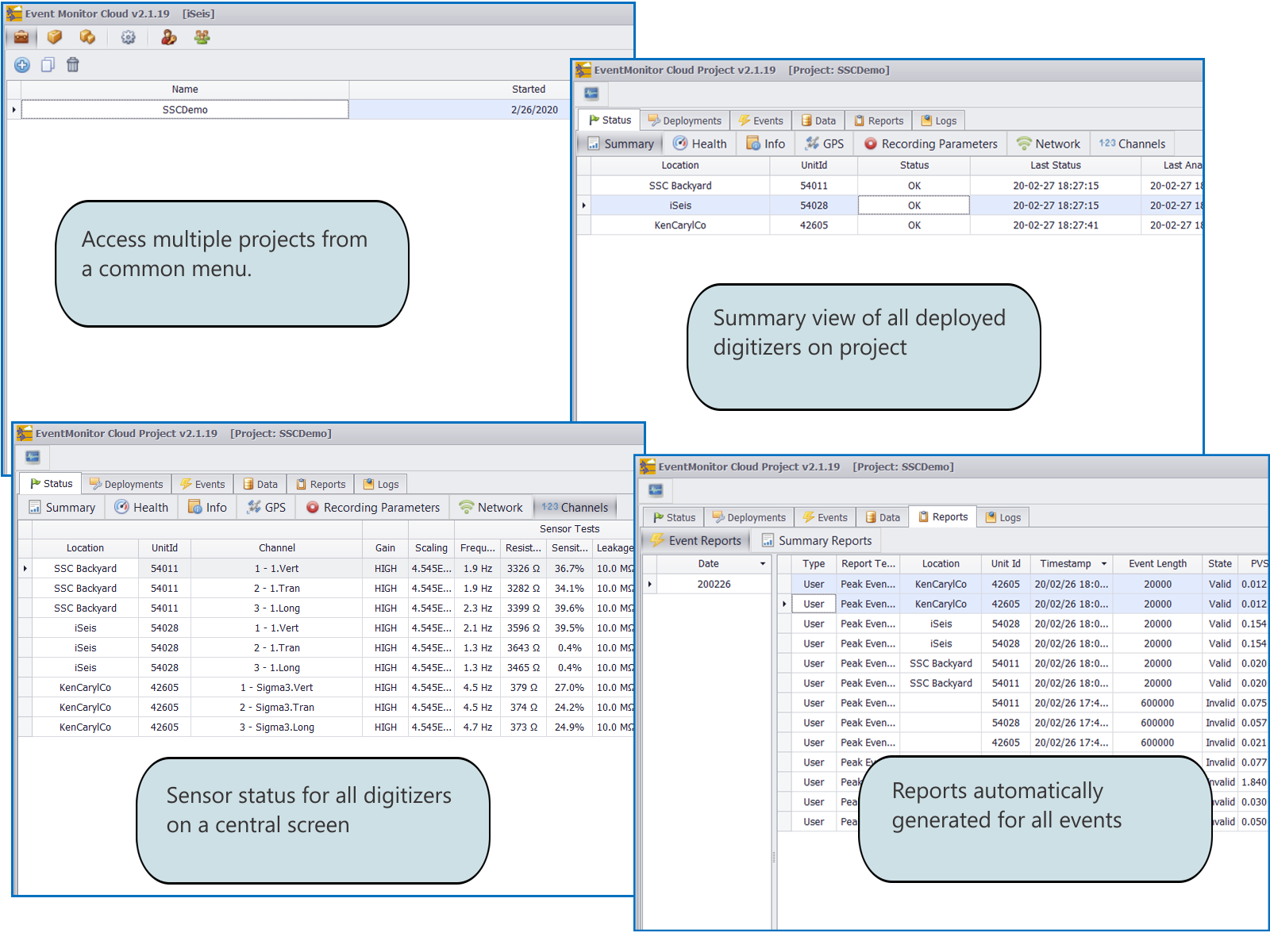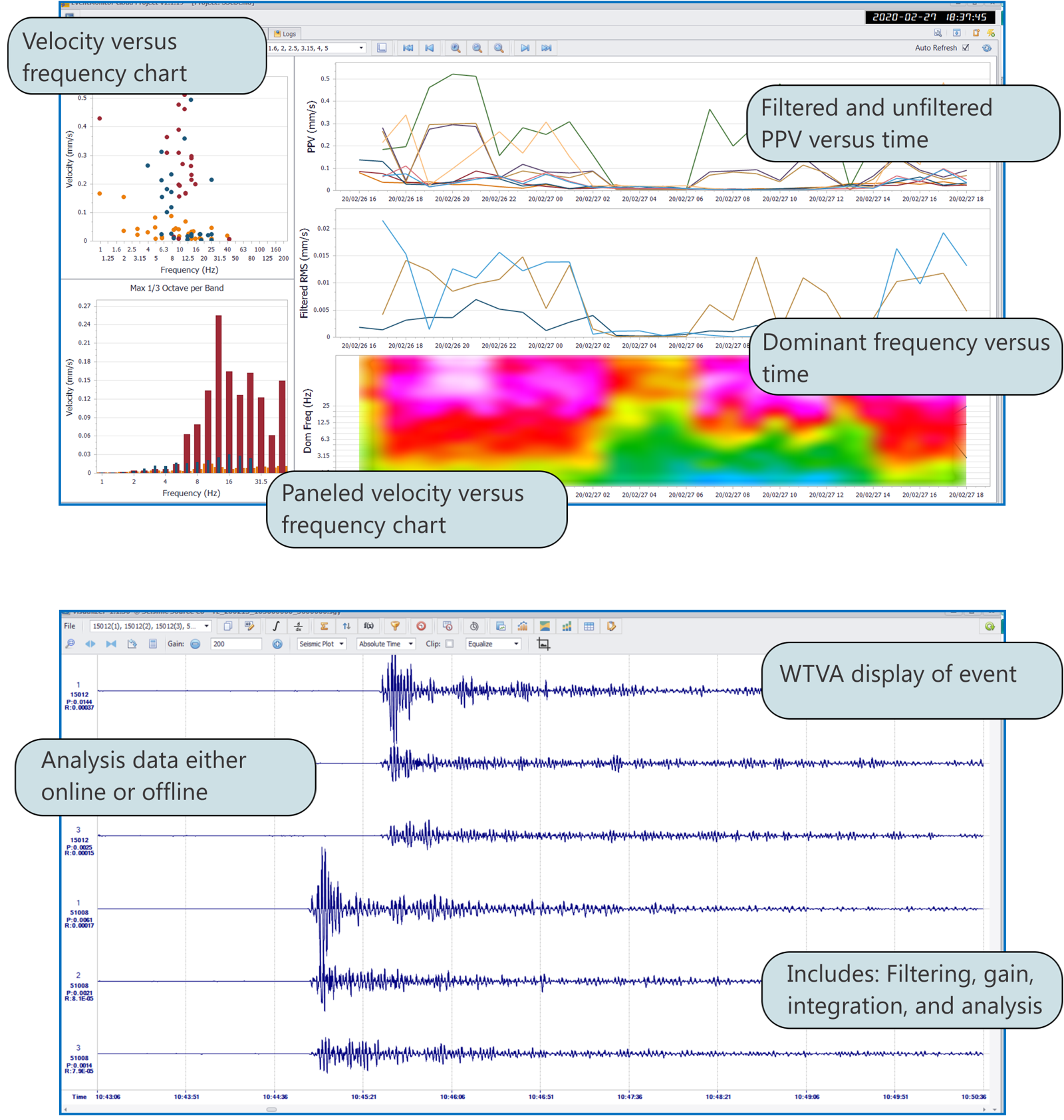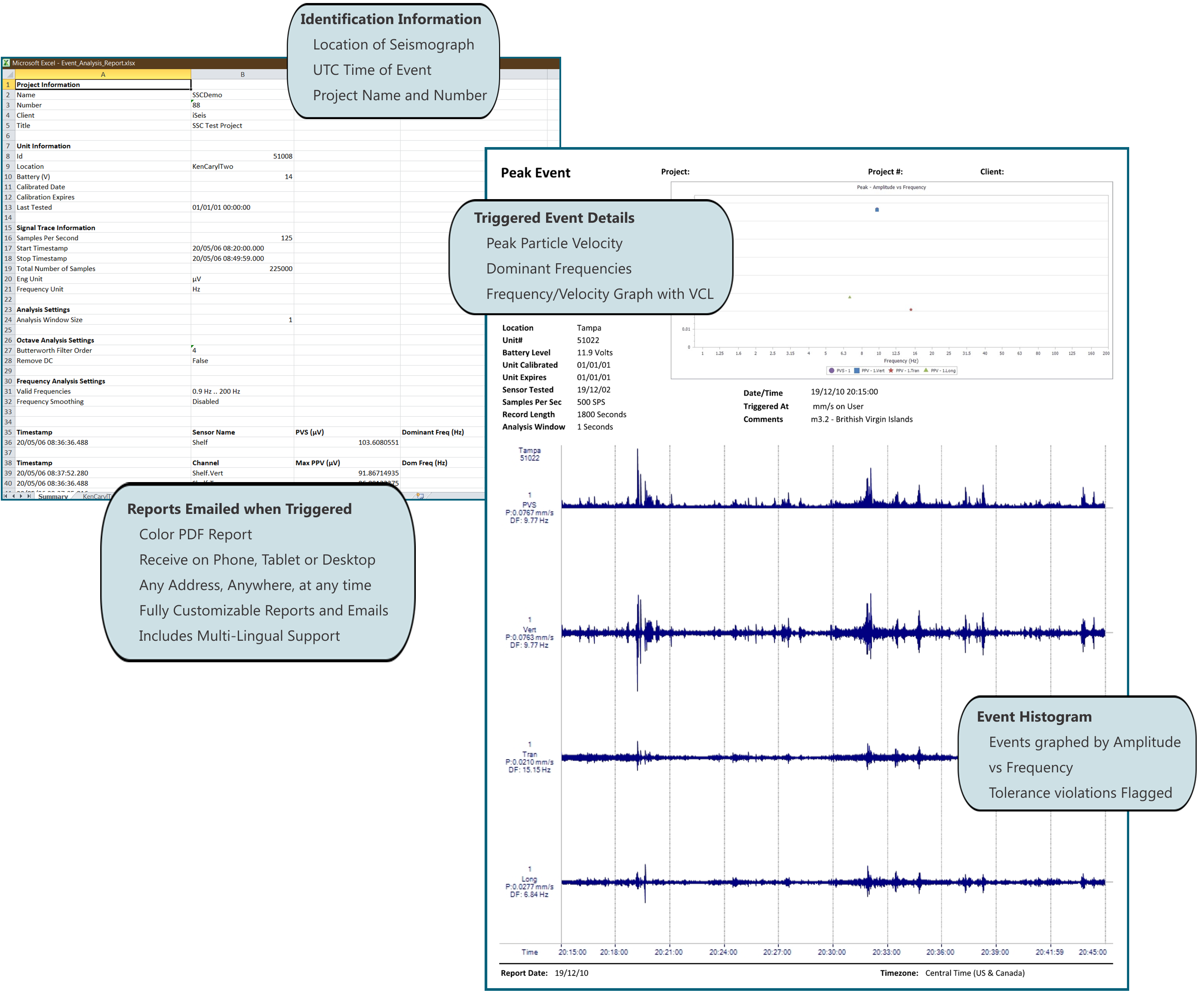Products
 |
| A Complete Monitoring Solution |
| |
Detect, Evaluate and Report
|
| |
The Event Monitoring System from Seismic Source provides a tool for managing a series of seismograph stations. These stations can be near or far, but their data is immediately accessible.
The Event Monitoring architecture provides:
|
|

|
Internet access for unattended monitoring of multiple arrays
|
|

|
Email alerts based on user-programmed thresholds and tolerances
|
|

|
Analysis and reports of events, individually and across time windows
|
|

|
Easy access to event information from anywhere
|
| |
System Software
|
| |
The Seismic Source Event Monitoring System is built using leading-edge software.
The Event Monitor Software package includes:
|
|

|
Multiple Account and Project Management
|
|

|
Remote Configuration and Control of Digitizers
|
|

|
Scheduled equipment testing
|
|

|
Real-time status updates
|
|

|
Evaluation of detected events
|
|

|
Automated data collection and archiving
|
| |
System Hardware
|
| |
The Seismic Source Event Monitoring System uses the most advanced
and precise seismograph hardware available.
This system includes:
|
|

|
High precision, field-proven nodal seismograph hardware
|
|

|
3, 4, 6, 12 or 24 channel digitizer options
|
|

|
Many optional features:
|
| |
- Internal or external sensors
|
| |
- Internal or external battery
|
| |
- Removable UBS-compatible memory
|
|
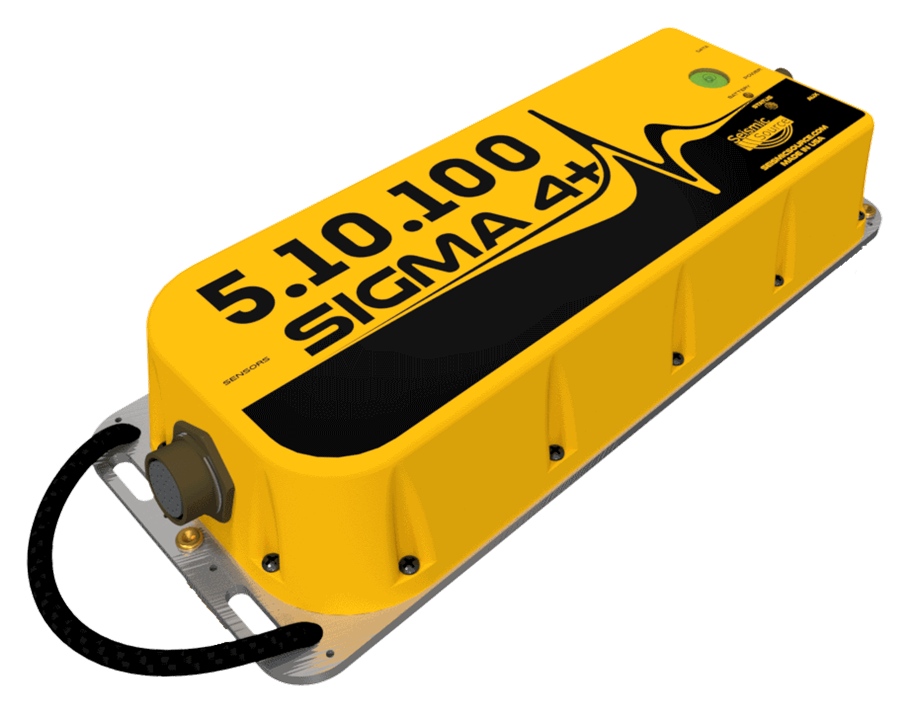
|
Event Monitoring Components:
| |
Digitizing Station
Sigma 4+ Digitizing Node connected to a cabled network connection.
|
| |
Digitizing Station w/ Wi-Fi
Sigma 4+ Digitizing Node connected to a network with a Wi-Fi transceiver.
|
| |
Digitizing Stations w/ Remote Access
Sigma 4+ Digitizing Node connected to the Internet with a Remove Access Box and either a Cellular Data Modem or Wi-Fi.
|
| |
Client Station in Office
A computer running EM Client and connected to the Internet.
|
| |
Station w/ Alarm Equipment
A computer running EM Alarms, with a relay network and siren, connected to the Internet.
|
| |
Back Office Server
A computer running EM Server or EM Local. This computer communicates with digitizers stations near and remote, and users both near and remote running EM Client. It receives data and status from RABbits and Sigmas, it relays that information to the uses, and EM Server will also archive data and trigger alarms if required.
|
|
|
Local Monitoring w/ Local Alerts
|
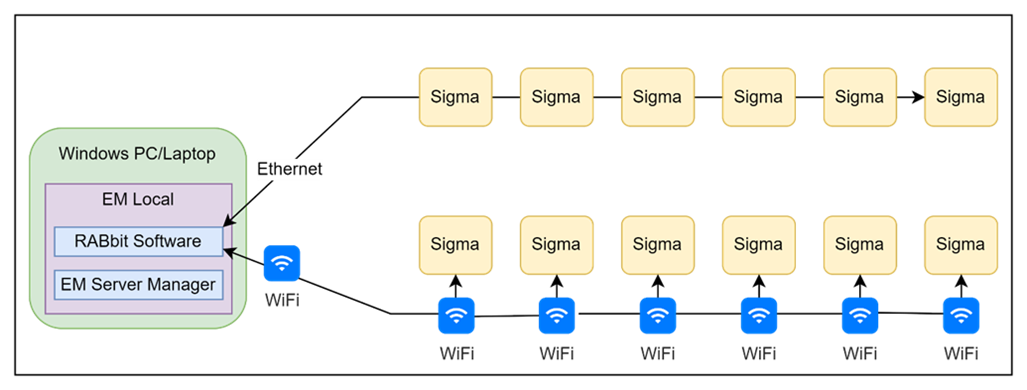
|
| |
| |
Digitizer Selection |
 |
Sigma 4+ w/ 2 Hz 3C Sensor & wired Ethernet connection |
 |
Sigma 4+ w/ 2 Hz 3C Sensor & wireless Wi-Fi connection |
| |
Digitizer Options |
 |
External Batteries and/or Solar Power Augmentation |
 |
External GPS Module for vault installation |
 |
External Sensors for burial or vault installation |
| |
Equipment Deployment |
 |
Project consist of one or more digitizer stations, each with multiple sensors |
 |
Digitizer Stations can be connected to the computer via: |
| |
- Cabled Ethernet |
| |
- Wi-Fi transceivers |
| |
- Cellular Data Modems |
| |
|
|
|
| |
| |
Data Acquisition |
 |
Continuous Sensor Data Acquisition for 24/7/365 monitoring |
 |
Monitoring Sensors for Triggering Events |
| |
Event Triggering |
 |
Unit Events can be triggered by: |
| |
- Peak Amplitude Levels |
| |
- RMS Amplitude Levels |
| |
- 1/3 Octave RMS Vector Sum, etc. |
 |
Multiple Unit Events can create Network Triggers |
 |
Events can be triggered based on Vibration Criteria |
| |
Data Archive |
 |
Data is archived to removable media in the field including: |
| |
- Digitizer Status Log |
| |
- Detected Event Reports |
| |
- Recorded Seismic Data |
| |
|
|
|
Local Monitoring w/ Data Backup
|
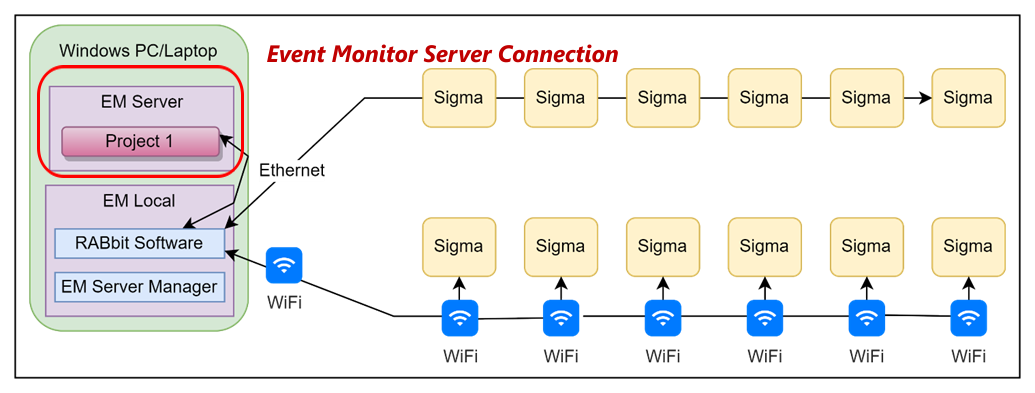
|
|
Adding an Internet connection to this system enables Event Monitor Local to upload information and data to a remote computer running Event Monitor Server.
|
Local Monitoring w/ Event Alerts
|
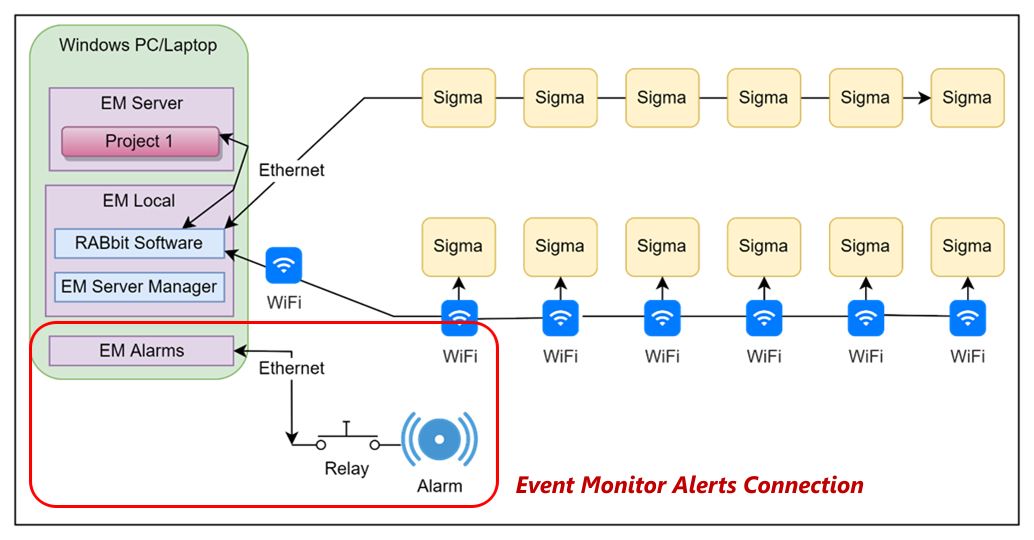
|
|
Adding Event Monitor Alarm to this system, plus a physical light or siren, gives Event Monitor Local a physical means to alert the operator or their village.computer running Event Monitor Server.
|
| |
| |
Remotely Monitor Multiple Projects
The Seismic Source Co Event Monitoring System can be expanded to remmonitor the |
| |
Event Monitor Server |
 |
Configures and controls User Accounts and Monitoring Projects |
 |
Receives and Archives Seismic Data and Status from the Field |
| |
Remote Access Boxes |
 |
Lightweight Linux Computer in the Field |
 |
Relays Commands from Server to Digitizer and Data from Digitizer to Server |
 |
Adds Robustness to Communications |
|
|
| |
| |
Event Monitor Client |
 |
System Interface for Users |
 |
Supports System configuration and control |
 |
Provides access to seismic data |
| |
|
| |
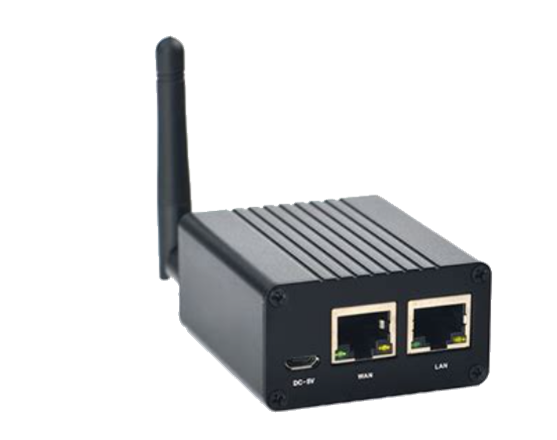 |
| |
Linux-Based Remote Access Box |
|
|
| |
| |
In Your Office
|
| |
Login and Credential Validation |
 |
All client-server communications are encrypted |
 |
Each user can access one on more accounts |
 |
Each account has its own set of stations and projects |
| |
EMC Client Application |
 |
Assesses system status |
 |
Deploys/Un-deploys seismograph stations |
 |
Assesses heath of individual stations |
 |
Views event list and individual events |
 |
Provides an overview of data acquisition |
 |
Initiates report creation |
 |
Accesses system log files |
| |
EMC Data Visualizer |
 |
Offloads seismic data from individual, and sets of seismograph stations |
 |
Displays WTVA data |
 |
Provides signal processing tools |
 |
Provides spectra analysis tools |
 |
Saves data to local computer in multiple different formats |
|
|
| |
| |
Email Reports |
 |
Setup on a per project basis |
 |
Alert Email sent immediately upon detection of event from the rabbit (no delay waiting for server) |
 |
Analysis Email sent after event time is over and event is analyzed. Sent from RABbit (no delay waiting for server) |
 |
PDF Report Email sent from server after report created on server |
| |
Troubleshooter Reports |
 |
Emails from server go out when status of unit changes (Battery, GPS, not recording, not uploading data, etc) |
 |
The "To" list of addresses to send troubleshooter reports is a different list than normal reports and on a per-project basis |
| |
|
|
|
|
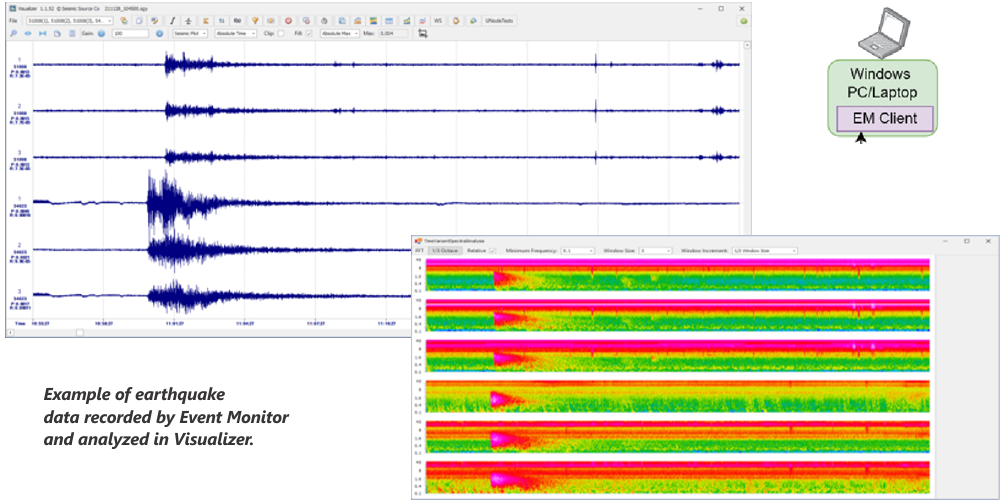
|
Interactive "Drill-Down" Menus
Interactive Status, Command, and Control
Interactive Event Analysis
Evaluate Data and Events
Analyze Individual Events
Multiple Reporting Tools
|
Event Analysis
|
Event Report
|
In the Back Office
|
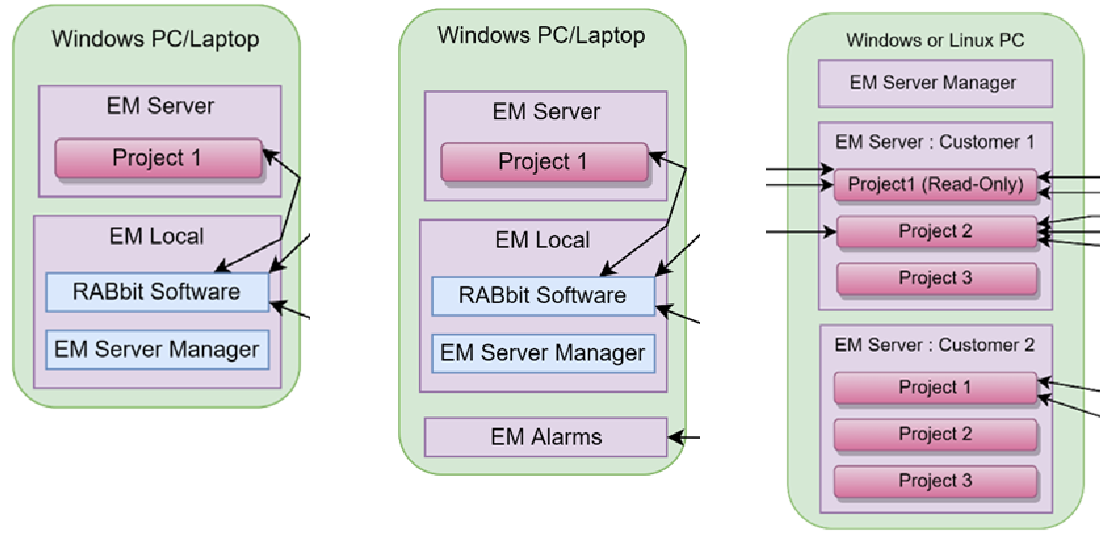
|
|
Examples of EM Server Configurations
|
|
Back in the office, a computer server maintains the Event Monitoring network. The software running on this server uploads alerts and data from the field sites, tracks accounts and projects, and ensures the results are available from anywhere with Internet access.
|
| |
| |
Accounts, Projects, Deployments |
 |
A server can have multiple accounts. Each account: |
| |
- Is secure and isolated from all other accounts |
| |
- Has its own set of users |
| |
- Has its own set of units (digitizers & RABbits) |
| |
- Has its own set of projects |
 |
An account can have many projects, both active and inactive. Each project: |
| |
- Project settings |
| |
- Email settings |
| |
- Report settings |
 |
A project can have multiple units deployed in it |
 |
A unit can be actively deployed to a single project |
|
|
| |
| |
Client / Server Architecture |
 |
The RABbit acts as client uploading data, status, analysis and events to server and downloading new config files and software updates |
 |
User computer running EMC acts as client to configure and visualize data and reports |
 |
Server acts as server and stores all the unit status, analysis and optionally data. If data offloading and archiving is a primary concern, then hosting an in-house server is preferred |
| |
Information Availability |
 |
Data is uploaded from seismograph to server via the RABbit All status, analysis and data are stored on the server, not on user’s computers |
 |
Once status, analysis and data are on the server, it is available to the EMC users |
|
|
|
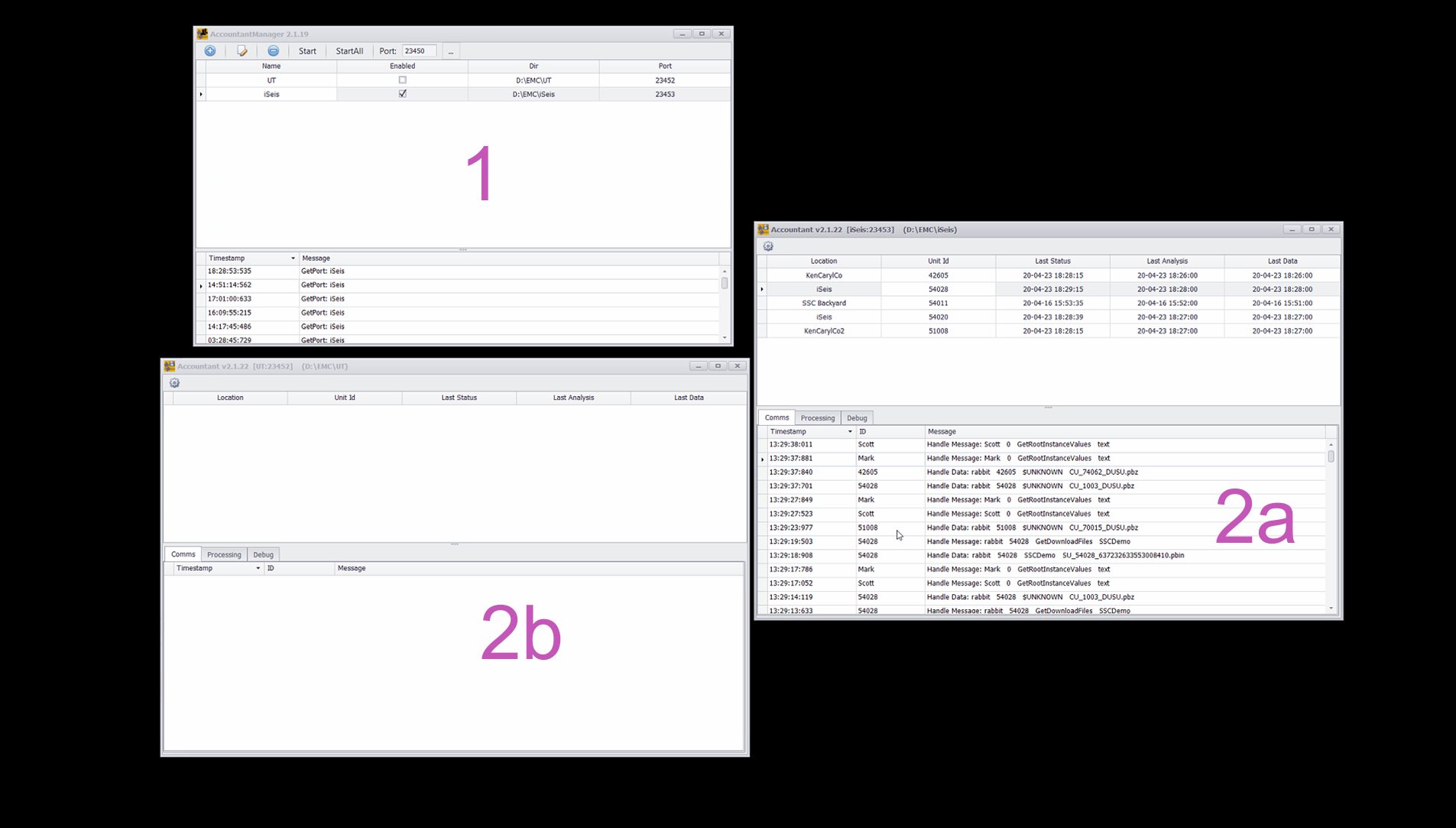
|
|
The EMC Server Suite is a series of programs that (1) receive status, analysis, and seismic data from the field, and (2) monitor user logins/logoffs and control access to the various accounts and projects.
|
| |
Seismograph Options
|
| |
The Seismic Cloud System utilizes instruments from the Seismic Source line of seismographs, so each system can be customized for any need or situation:
|
|

|
Sigma 3+: Three channels and field rugged
|
|

|
Sigma 4+: 3 or 4 channels with internal sensors and batteries
|
|

|
DAQ3-3: Three channels for permanent installation
|
|

|
DAQlink 4: 24 channels and high samples rates
|
|

|
DX-6: 1 to 6 channels with space for user options
|
| |
All of these seismographs use any sensor, and can be configured with geophones, accelerometers or hydrophones
|
|
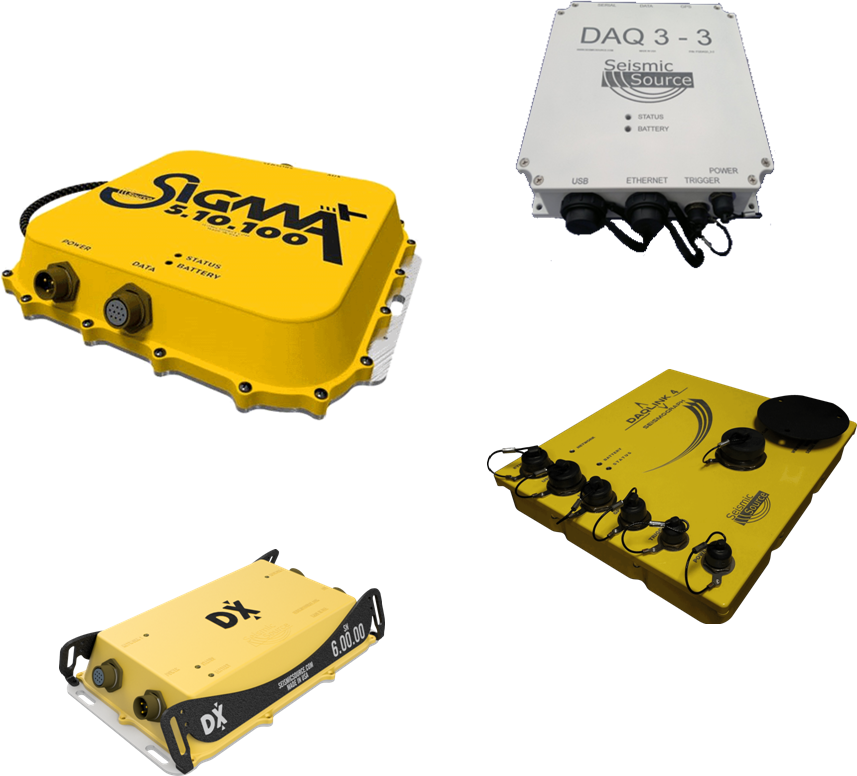 |






